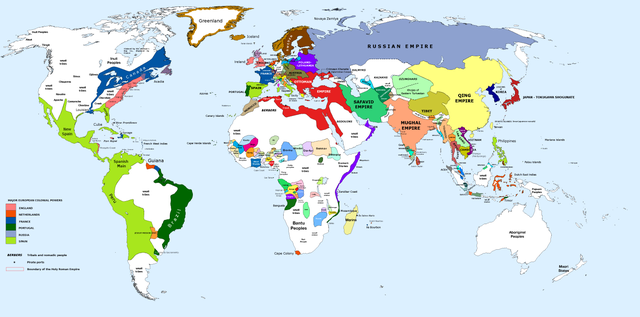13 INTRODUCTION TO THE 17th Century
The 17th century was a pivotal era in human history, marked by a surge in scientific discovery and global connectivity. This period is often referred to as the Age of the Scientific Revolution, as it witnessed the emergence of groundbreaking ideas and methods that transformed our understanding of the natural world. Merchants, scholars, and travelers actively connected the world, establishing vibrant networks of exchange that spanned continents. These networks enabled the dynamic sharing of ideas, values, and goods, fostering a new era of global collaboration and discovery.

As the century began, the world became more interconnected than ever before, thanks to newly established networks of exchange. Americans, Asians, Africans, and Europeans engaged in extensive trade, sharing not only physical goods but also values and ideas. Ancient Greek texts, preserved by the Muslim world for centuries, were reintroduced to Europe through these interactions. Hindu mathematical insights, along with spices such as pepper and tea, traveled across continents, enriching multiple cultures. This era also brought a profound realization of the world’s vastness and diversity, sparking new questions and a quest for deeper understanding.
Scientists such as Nicolaus Copernicus, Galileo Galilei, René Descartes, and Isaac Newton transformed traditional views by promoting rational inquiry and evidence-based knowledge. This shift profoundly altered long-standing beliefs about the world and humanity’s place within it. The advancements of the Scientific Revolution spread along trade routes established in the previous century, reaching diverse cultures. In China, during the Qing Dynasty, emperors and scholars explored European mathematical techniques for applications like predicting eclipses, reforming the calendar, and creating accurate maps. Similarly, Ottoman scholars examined the practical uses of new scientific methods for cartography and calendrical reforms. Although Japan officially limited European influence, it engaged with Dutch traders to gain insights into European anatomical discoveries. Each of these regions, with their own rich scientific traditions, adapted and integrated European scientific advancements to fit their unique needs and goals.
Thus, the 17th century was a time of intensified cultural borrowing. Peoples that had been introduced to each other in the 16th century selectively borrowed new elements learned from interactions with others and integrated them into their own cultural and intellectual traditions. Filipinos, Siberians, and many Native American peoples borrowed elements from Christianity. Likewise, people in southeast Asia and north Africa peoples adopted elements from Islam. North Indian Sikhs continued to draw on both Hindu and Islamic teachings. Europeans borrowed ideas learned from Islamic, Hindu, and Buddhist philosophers. European doctors also looked to both Native American and Chinese medicinal traditions to understand the use of plants in the treatment of illnesses better.
However, it is essential to acknowledge that cultural borrowing was not always equitable or voluntary. European powers exploited their military, political, and economic dominance to oppress and enslave Indigenous peoples, appropriating their resources and lands. While some nations, such as China and Japan, managed to maintain their sovereignty and cultural integrity, many others faced significant challenges in preserving their identities and traditions.
In this chapter, we will seek to understand all that has been mentioned above as we look at the continued impact of early modern globalization. Our study begins by looking at the various geographical regions of the world in the 17th century. The initial “global overview” discusses important rulers, cultural trends, and developments that impacted the lives of people. The remaining sections of this part of the book focus on the following important 17th century events: the Peace of Westphalia and the rise of the nation-state and the Scientific Revolution.
